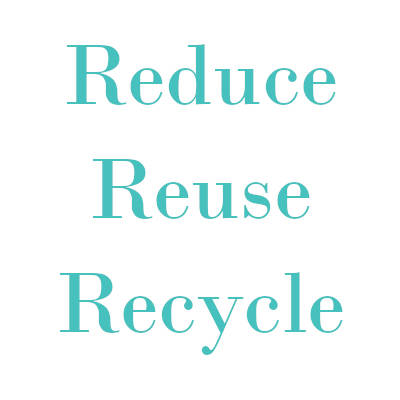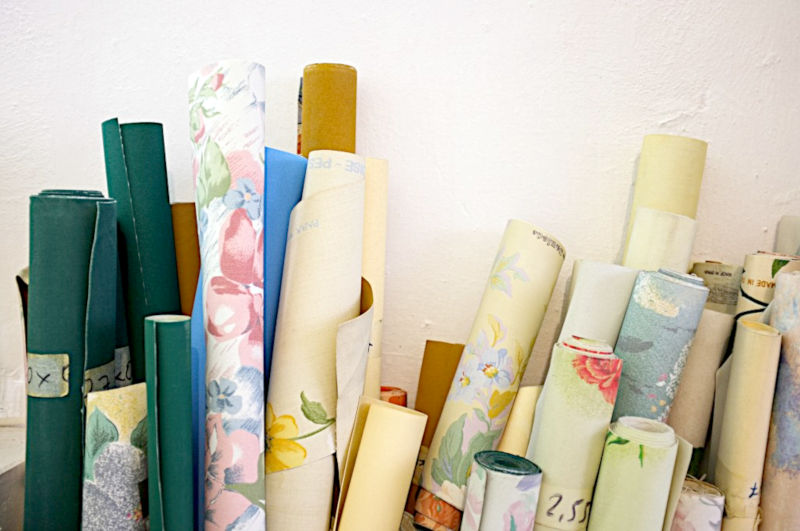Upcycling is one of our four core values. It’s also one of the fastest-growing trends in the fashion industry. On top of it, most people upcycle all the time. Yet every so often we get asked the question: What is Upcycling? Let’s find out!
Nearly everyone is familiar with the idea of recycling. It has taken way too long to put the environmental impact of our modern lives in the mainstream, but it has finally happened. Recycling is more common than ever and the infrastructure exists. A substantial amount of glass, paper and plastic packaging nowadays avoids the landfill. Waste management is also a globalised, multi-billion dollar industry. At the same time, new biodegradable and environmentally neutral materials are being developed.
 The three Rs
The three RsThe truth though is that recycling is the last step in the life of a product. Furthermore, recycling should be the last step in an environmentally conscious lifestyle. In order to minimise our impact on the environment, we should follow the three Rs: Reduce, Reuse, Recycle. Reducing consumption, packaging and waste comes first. Reusing as much as possible in order to resist the need for new products comes second. And recycling true waste is the final part of the puzzle.
We can add a fourth R in the above equation. That is usually coming first and it stands for Refuse. Refuse unnecessary packaging, plastic carrier bags, single-use plastics in general and everything else harmful and pointless. And we have so many of these in our daily lives already.
Let’s use a quote, to begin with: “Upcycling, also known as creative reuse, is the process of transforming by-products, waste materials, useless, or unwanted products into new materials or products perceived to be of greater quality, such as artistic value or environmental value.”
There you go. Upcycling is essentially a more advanced form of reusing. Instead of or just reusing an old product, we focus on its building blocks. So upcycling is the process of reusing discarded materials to create new products of higher complexity, quality or value than the original. In contrast, the more common and widely used recycling can be called downcycling. The point is that most recycling involves simply extracting useful raw materials from discarded products. It does so by breaking down waste in its elements. The result is most of the times inferior to the original raw material, especially when it comes to synthetic substances like plastics. On the other hand, the goal of upcycling is to reduce the consumption of new raw materials and prevent waste by making use of existing ones.
 People have been upcycling for centuries. Making complex garments from older fabrics, building machines from disused metals or jewellery from shells and rocks are all forms of upcycling. It just so happens that nobody called it like that before the mid-’90s. We had to reach a point of mass, uncontrolled consumption and a culture of quick use and discard to realise that products and materials deserve a second chance. And we deserve a more conscious, slow and considerate way of living. And a more creative one too!
People have been upcycling for centuries. Making complex garments from older fabrics, building machines from disused metals or jewellery from shells and rocks are all forms of upcycling. It just so happens that nobody called it like that before the mid-’90s. We had to reach a point of mass, uncontrolled consumption and a culture of quick use and discard to realise that products and materials deserve a second chance. And we deserve a more conscious, slow and considerate way of living. And a more creative one too!
Here it goes then. We at 3QUARTERS upcycle old, leftover or decommissioned Athenian balcony awnings into fashionable, stylish and functional bags. It’s reusing but more creative, sexier. And while at it, we have a zero-waste policy, so we don’t create any more waste whatsoever.
You can read more about it in our Sustainability section and we’re always available for a chat. With questions or ideas or anything at all.
Interested to find out more? Here’s more reading on Upcycling, with loads of links and references. Or try one of these ideas.
3QUARTERS © 2025 | Paintings © Daniel Rich | Built by CLRBLND
(your first order)